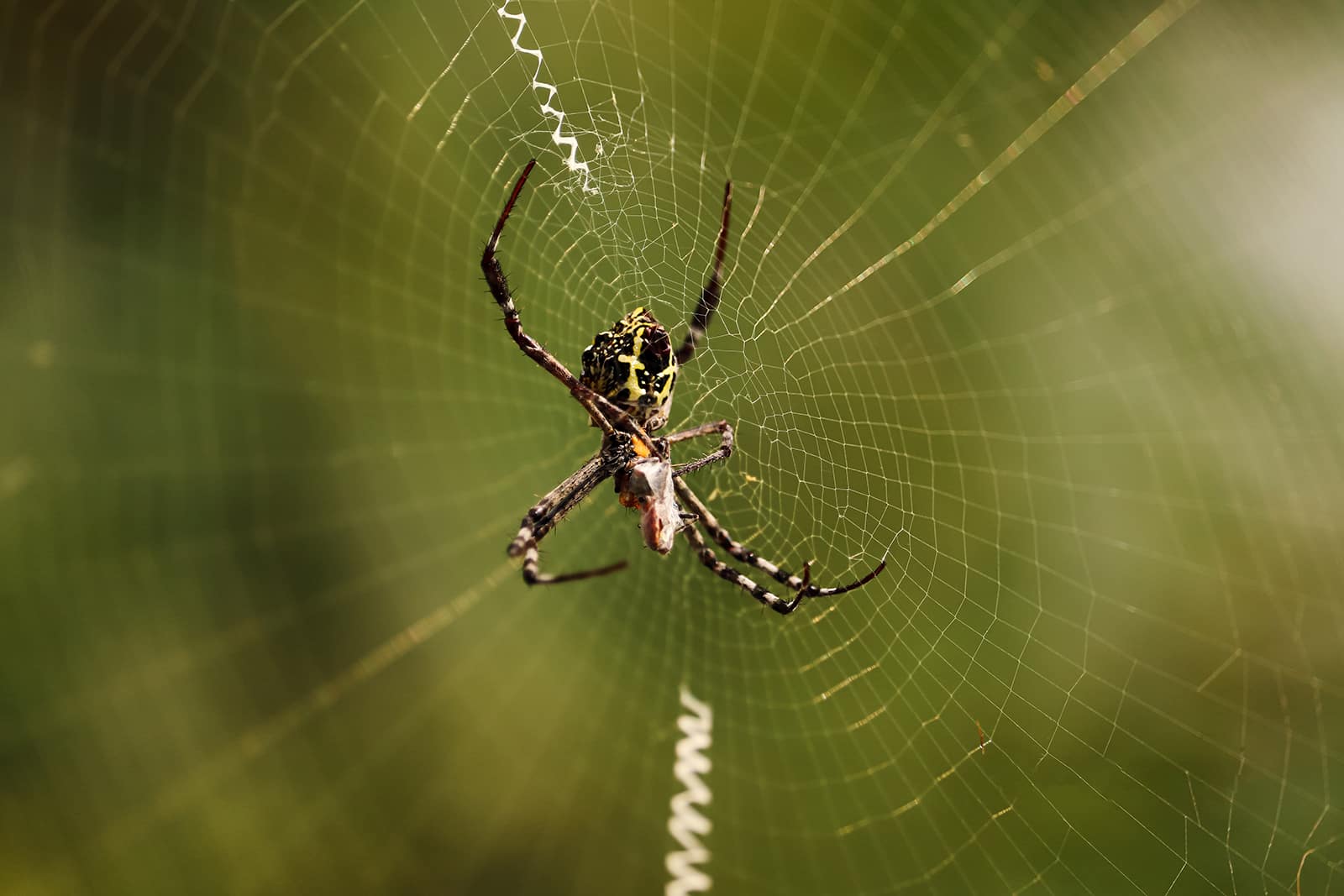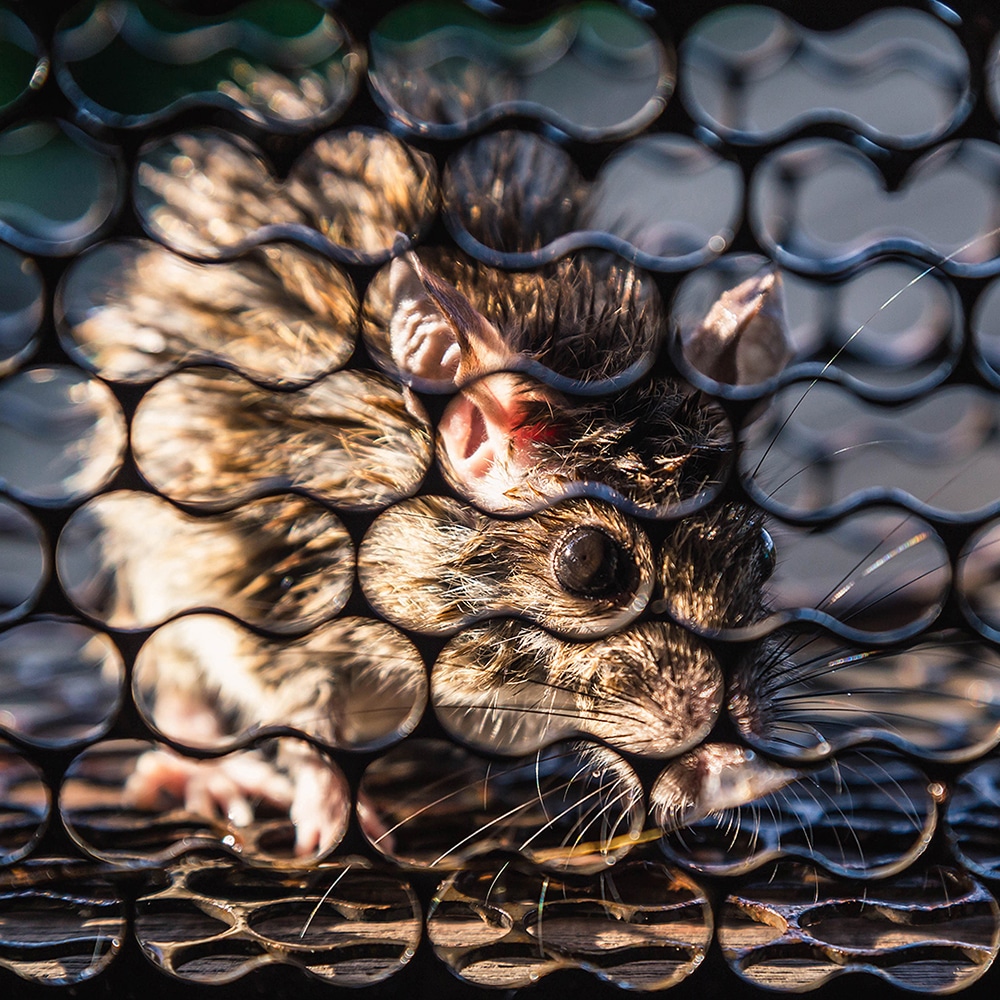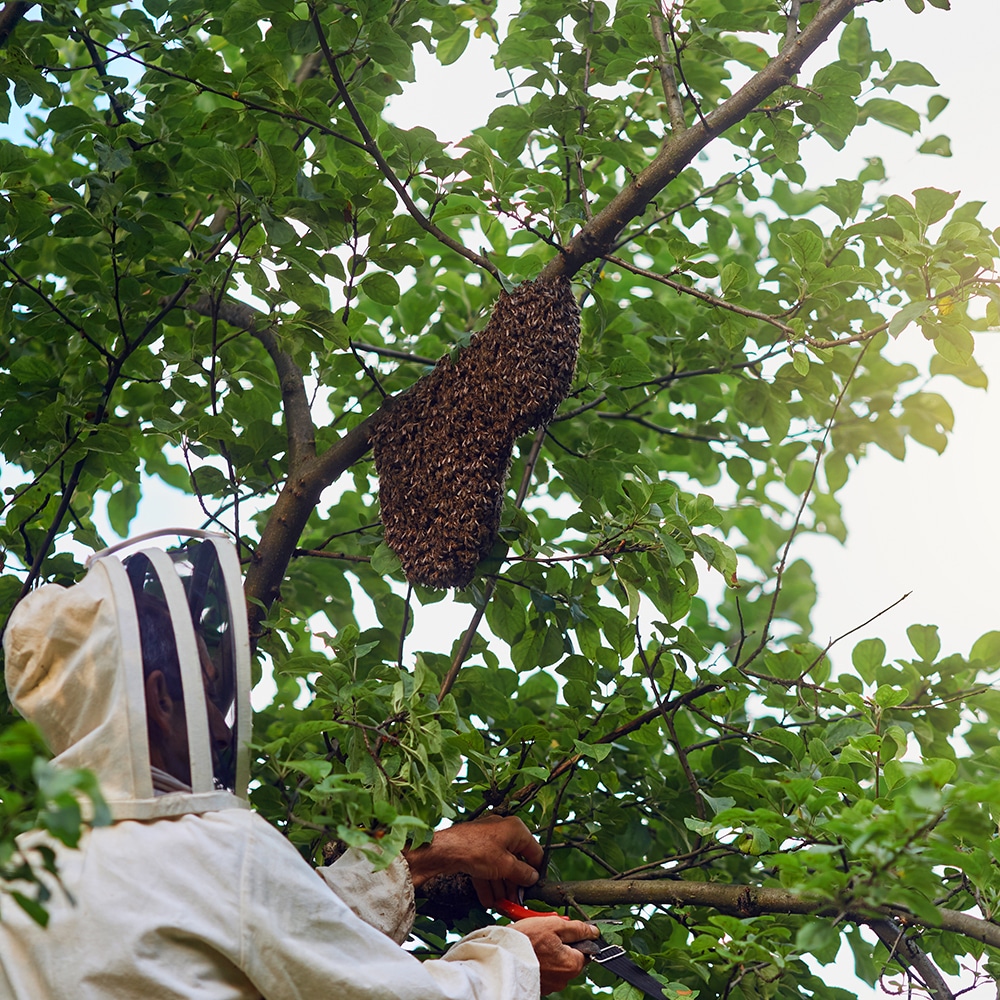
Why Do Spiders Come Back And Why
Why Do Spiders Come Back And Why On The Central Coast NSW. Responsive Proactive Solutions. Detail-focused for lasting results. Call Adam on 0431 222 894
Welcome to “Effective Rodent Traps A Step-by-Step Guide” from Vital Pest Control. Tackling rodent issues on the Central Coast NSW can be hassle-free with the right approach. Let’s explore how you can efficiently manage rodent problems.
Types of Traps
Different traps serve different needs. Snap traps are quick and effective, while live traps offer a humane approach. Glue traps can be handy but check local guidelines. Choose based on your specific situation for the best outcome.
Bait Selection
Bait choice is crucial for success. Use peanut butter or cheese to attract rodents. Fresh bait increases catch rates. Rotate baits to keep rodents interested and avoid trap shyness.
Placement Strategies
Position traps where rodents travel. Look for droppings or gnaw marks as clues. Place traps along walls and in corners. Correct placement boosts effectiveness significantly.
Avoiding Trap Shyness
Rodents can be wary of new objects. Introduce traps without setting them initially. Allow rodents to explore safely. This reduces suspicion and increases future success.
Checking Traps Regularly
Check traps daily for capture. Prompt removal prevents odour and attracts more rodents. Regular checks ensure traps work optimally. Stay proactive for best results.
Using Multiple Traps
Deploy several traps for large infestations. Cover more ground by placing multiple units. This strategy speeds up the control process and ensures thorough coverage.
Safety Precautions
Handle traps with care. Wear gloves to avoid contamination. Keep traps away from pets and children. Safety is paramount during pest control efforts.
Ethical Disposal
Dispose of rodents ethically. Check local waste regulations. Use sealed bags to prevent odour. Responsible disposal maintains hygiene and community safety.
Discover how we can help you today! Learn more at our Contact page.

When dealing with rodent infestations in Central Coast NSW, choosing the right traps is crucial for effective pest control. Understanding the different types of traps available can help you make an informed decision that suits your specific needs.
Snap Traps
Snap traps are a traditional choice for rodent control. These traps are mechanical devices designed to kill rodents instantly. They work by luring mice or rats with bait, then using a spring-loaded bar to snap shut. While they are highly effective, placement and bait selection are key for success. Snap traps are reusable and cost-effective, making them a popular option for households dealing with recurring rodent issues.
Electronic Traps
Electronic traps are an advanced option for those seeking a more humane solution. These traps deliver a swift, lethal electric shock to the rodent, ensuring a quick death. They are easy to set up and often feature indicator lights to show when a rodent has been caught. Electronic traps are typically battery-operated and can be reused multiple times. They are ideal for indoor use due to their clean and efficient nature.
Glue Traps
Glue traps, also known as sticky boards, capture rodents by using a sticky surface that immobilises them. While they are effective for small mice infestations, they are less humane as they do not kill the rodent instantly. Glue traps are best used in areas where snap or electronic traps are impractical. They are disposable and require careful monitoring to ensure trapped rodents are dealt with promptly.
When it comes to pest control on the Central Coast of NSW, choosing the right bait is crucial for effective rodent traps. Understanding the preferences and behaviours of rodents can significantly improve your success in baiting and trapping them. This guide explores the best bait options to enhance your pest control strategies.
Understanding Rodent Preferences
Rodents are attracted to different types of food depending on the species. Common options include high-protein foods like peanut butter and meats, as well as sweet foods such as fruits and chocolate. Knowing which rodent you’re dealing with can help tailor your bait selection for maximum effectiveness.
Natural vs Synthetic Baits
While synthetic baits can be effective, natural baits often yield better results. Fresh foods mimic what rodents encounter in the wild, increasing the likelihood they’ll take the bait. For example, cheese or bread can attract rats, while seeds may work better for mice. Consider the environment and availability of food sources when choosing your bait.
Placement and Quantity
Proper placement of bait is critical. Position it along rodent pathways, near nests, or in areas where droppings are found. Using small amounts initially can prevent suspicion, allowing rodents to gain trust before increasing the quantity. Regularly check and refresh baits to maintain their appeal and effectiveness.
In the battle against rodents on the Central Coast NSW, strategic placement of traps is key to effective pest control. Understanding local habitats and rodent behaviour ensures traps are set where they will catch the most vermin. Whether dealing with rats or mice, precise trap placement increases success rates, helping maintain a pest-free environment.
Identify High Traffic Areas
Start by observing rodent activity to determine their common pathways. Look for droppings, grease marks, and gnawed items. Placing traps along walls where rodents frequently travel can significantly increase capture rates. Avoid placing traps in open areas where rodents are less likely to venture.
Utilise Strategic Baiting
Effective baiting can lure rodents into traps more efficiently. Use foods that rodents find irresistible, such as peanut butter or dried fruit. Position bait at the end of the trap to ensure the rodent fully commits, triggering the mechanism. Regularly check and refresh bait to maintain its appeal.
Avoid Obstructions
Ensure traps are unobstructed by clutter or debris. Rodents are cautious and may avoid traps if they feel restricted. Clear pathways make it more likely for rodents to approach traps without hesitation, increasing the likelihood of capture.
Trap shyness can be a significant hurdle in effective rodent control on the Central Coast, NSW. Understanding how to avoid this behaviour ensures your pest control efforts are successful. Trap shyness occurs when rodents become wary of traps, making them less likely to approach or engage. Here are some strategies to overcome trap shyness and improve your rodent control outcomes.
Proper Trap Placement
Strategically placing traps is crucial. Rodents tend to follow walls and edges. Place traps along these paths to increase the likelihood of catching one. Avoid placing traps in open areas where rodents are less likely to venture. Consider the rodents’ entry points and nesting areas for optimal placement.
Pre-Baiting Techniques
Introduce bait to the area without setting traps initially. This allows rodents to become comfortable with the bait. After a few days, set the traps using the same bait. This method increases the chances of capturing rodents as they become accustomed to the bait.
Regular Monitoring and Adjustment
Consistently check traps and adjust their placement if necessary. Observing rodent activity patterns can provide insights into more effective trap locations. Regularly changing bait types can also reduce trap shyness, keeping curiosity high among the rodent population.
Regularly checking traps is crucial for effective pest control on the Central Coast, NSW. Rodents can cause significant damage and spread disease, making it essential to monitor traps frequently. This practice not only ensures that traps remain functional but also helps in swiftly addressing any rodent activity.
Early Detection and Response
Regular inspections allow for early detection of rodent presence. By checking traps often, you can quickly respond to any signs of activity. This prompt action helps prevent infestations from escalating, keeping your property safe and damage-free.
Maintaining Trap Efficiency
Ensuring traps are in good working condition is vital. Over time, traps may become less effective due to wear or environmental factors. Regular checks help identify any issues, allowing for repairs or replacements, thus maintaining their efficiency in capturing rodents.
Reducing Risks to Non-Target Animals
Frequent trap monitoring reduces the risk of non-target animals being harmed. By checking traps, you can quickly release any animals caught unintentionally, ensuring humane pest control practices. This approach aligns with responsible wildlife management on the Central Coast.
Improved Pest Management Strategy
Incorporating regular trap checks into your pest management strategy enhances overall effectiveness. It provides valuable data on rodent activity patterns, helping refine your approach. This information supports proactive measures, ultimately leading to long-term success in pest control efforts.
Effective pest control is crucial for maintaining a safe and healthy environment on the Central Coast of NSW. Using multiple traps for rodent control is a strategic approach that can significantly enhance the effectiveness of pest management efforts. By understanding the variety of traps available and their optimal placement, one can effectively tackle rodent infestations.
Choosing the Right Traps
When dealing with rodents, selecting the right traps is essential. Snap traps, glue traps, and electronic traps each serve specific purposes. Snap traps are traditional and effective for small infestations. Glue traps capture rodents without killing them, ideal for humane control. Electronic traps deliver a quick, lethal shock, suitable for severe infestations. By combining different types, you maximise the chances of capturing all rodents.
Strategic Placement
Placement is as crucial as the type of trap used. Rodents typically follow walls and edges, so placing traps along these paths increases success rates. Focus on areas with signs of activity, like droppings or gnaw marks. Rotating traps frequently prevents rodents from becoming trap-shy, ensuring continued effectiveness.
Monitoring and Maintenance
Regular monitoring and maintenance of traps are vital for ongoing pest control. Check traps daily to remove captured rodents and reset traps. This routine keeps the traps working efficiently and helps identify any changes in rodent activity. By staying proactive, you maintain control over the pest situation, safeguarding your property.
When dealing with pest control on the Central Coast, NSW, ensuring safety is paramount. Rodent traps can be effective, but they require careful handling to protect both humans and pets. Implementing the right safety measures not only ensures the successful elimination of pests but also safeguards the environment.
Handling Rodent Traps Safely
Always wear gloves when setting or checking rodent traps. This prevents direct contact with harmful substances and reduces the risk of diseases. Choose sturdy gloves that resist punctures to further protect your skin. Regularly inspect traps to ensure they remain intact and functional, reducing the chance of accidental harm.
Choosing the Right Traps
Select traps that suit the specific rodent problem and environment. Snap traps and electronic traps offer reliable options. Ensure traps are placed in secure, out-of-reach locations for children and pets. This helps avoid unintended injuries and ensures traps remain effective against rodents.
Environmental Considerations
Consider the environmental impact when using rodent traps. Opt for traps that minimise harm to non-target wildlife. Use bait that won’t attract other animals. Always follow local regulations regarding pest control methods to ensure compliance and protect native species.
By following these safety precautions, you can effectively manage rodent problems on the Central Coast while ensuring the safety of your household and the surrounding environment.
On the Central Coast NSW, disposing of rodent traps ethically is crucial for both environmental health and community well-being. Proper disposal ensures we minimise harm to other wildlife and maintain a clean and safe environment. In this guide, we’ll explore key practices in ethical disposal for effective pest control.
Understanding Local Regulations
Before disposing of any pest control materials, it’s essential to understand local waste management regulations. The Central Coast Council provides guidelines on handling hazardous waste, including rodent traps. Familiarising yourself with these rules helps you comply with legal requirements and promotes responsible waste management.
Choosing Eco-Friendly Traps
When selecting rodent traps, opt for eco-friendly designs. These traps often use non-toxic materials that break down naturally, reducing environmental impact. By choosing these alternatives, you contribute to sustainability and ensure safer disposal practices.
Safe Disposal Methods
After catching rodents, dispose of the traps and any remains carefully. Seal them in a biodegradable bag before placing them in appropriate waste bins. This prevents contamination and keeps the surrounding area free from disease. Always wear gloves during this process to maintain hygiene.
Community Awareness
Raising awareness about ethical disposal practices is vital. Share information with neighbours and community groups to foster a collective effort in maintaining a pest-free environment. Education plays a key role in ensuring everyone follows best practices for pest management.
Preventing rodents from re-entering your property on the Central Coast NSW is crucial for effective pest control. After successfully trapping these pesky invaders, ensuring they don’t return is the next step. Implementing preventative measures not only protects your home but also enhances your quality of life.
Seal Entry Points
Identify and seal any potential entry points around your home. Rodents can squeeze through small gaps, so focus on areas like vents, pipes, and cracks in walls. Use materials like steel wool or caulk to block these openings effectively. Consistent monitoring of these areas is essential to prevent future invasions.
Maintain Cleanliness
Rodents are drawn to food sources and clutter. Keep your home clean and free of food debris. Store food in airtight containers and ensure rubbish bins have tight-fitting lids. Regularly clean under appliances and furniture where crumbs might accumulate, reducing the likelihood of attracting rodents.
Utilise Natural Deterrents
Consider using natural deterrents like peppermint oil, which can repel rodents due to its strong scent. Spraying this around potential entry points and nesting areas can keep these pests at bay. Regular application ensures continued effectiveness, providing a chemical-free solution for pest control.
Understanding high traffic rodent routes is crucial for effective pest control. On the Central Coast NSW, rodents follow predictable paths in search of food and shelter. Identifying these routes can significantly enhance the efficiency of traps, ensuring a swift resolution to rodent problems. With Vital Pest Control’s insights, you can tackle these unwelcome visitors with precision.
Common Rodent Pathways
Rodents often utilise narrow passages along walls and fences. These creatures prefer moving along edges where they feel secure. Observing these patterns can help pinpoint where to place traps. Areas near kitchens, garages, and basements are hotspots due to easy access to food and nesting materials. Recognising these high traffic zones allows for strategic trap placement.
Signs of Rodent Activity
Droppings and grease marks are telltale signs of rodent routes. Rodents leave behind droppings as they traverse their paths. Additionally, their oily fur leaves dark smudges along walls they’ve consistently travelled. Identifying these signs can guide you to the most effective trap locations, increasing the chance of capturing these pests swiftly.
Using Local Expertise
Enlisting local pest control experts like Vital Pest Control can provide valuable insights into regional rodent behaviour. Understanding local rodent habits and preferred routes is vital for effective intervention. Professionals can identify less obvious pathways and nesting sites, offering an advantage in managing infestations efficiently on the Central Coast.
When dealing with rodent issues on the Central Coast NSW, using the right gear is crucial for safety and effectiveness. Gloves play a vital role in pest control, offering protection and ensuring hygiene. Not only do they shield against potential bites and scratches, but they also prevent the spread of diseases rodents often carry.
Protection Against Contaminants
Handling traps and rodents can expose you to harmful bacteria and viruses. Wearing gloves creates a barrier, reducing the risk of contamination. This is particularly important in areas like the Central Coast where rodent populations can vary, making it essential to stay cautious.
Improving Handling Efficiency
Gloves provide a better grip, making it easier to set and check traps. Slippery or ill-fitting gloves can cause mishaps, so choosing the right type is important. Opt for gloves that are snug yet flexible, allowing for precision in trap placement and removal.
Maintaining Hygiene Standards
After handling rodents or traps, gloves can be easily disposed of, maintaining hygiene. This prevents cross-contamination in homes or businesses. It’s a simple yet effective way to ensure your pest control methods remain sanitary.
Rodents on the Central Coast NSW can be a real nuisance, especially when they become trap averse. These clever creatures quickly learn to avoid traditional traps, making pest control a challenge. Understanding their behaviour and adapting your strategy can help manage these pesky intruders effectively.
Understanding Rodent Behaviour
Rodents are highly intelligent, often wary of new objects in their environment. When they encounter a trap, they might initially approach with caution. If they sense danger or see a fellow rodent caught, they quickly learn to avoid it. Observing their patterns can provide clues about their favourite paths and hideouts, helping in placing traps more strategically.
Utilising Alternative Bait
Changing the bait can make a difference when dealing with trap averse rodents. Using strong-scented attractants like peanut butter or bacon can lure them back. Rotating different foods keeps them curious and less suspicious. Ensuring the bait is fresh and appealing can increase your chances of catching them successfully.
Implementing Diverse Trap Types
Variety is key in managing trap averse rodents. Consider using a mix of snap traps, glue boards, and electronic traps. Each type has distinct advantages, and switching them up can catch rodents off guard. Placing these traps in areas with visible droppings or gnaw marks can enhance effectiveness.
Dealing with pests on the Central Coast of NSW requires precision and knowledge. Many residents make common mistakes in pest control, leading to ineffective results. Understanding these errors can save time, effort, and resources. Here, we delve into some frequent pitfalls in rodent management.
Overreliance in Bait
One common mistake is depending too heavily on bait for rodent control. While bait can attract rodents, it doesn’t address the root of the problem. Focusing solely on bait might give temporary relief, but without eliminating entry points and nesting areas, rodents often return. Identifying and sealing entry points, alongside baiting, ensures a more comprehensive approach.
Ignoring Sanitation
Effective pest control goes hand in hand with proper sanitation. Many neglect to clean up potential food sources, which attracts rodents. Simple practices like securing food in airtight containers and clearing crumbs can significantly deter rodent infestation. Regular cleaning routines break the food supply chain that keeps pests coming back.
Inadequate Trap Placement
Another mistake involves improper trap placement. Placing traps in the open might not yield the best results. Rodents prefer moving along walls or hidden paths. Strategically placing traps in these areas increases the likelihood of catching them. Observing signs of rodent activity helps in choosing the optimal trap locations.
When dealing with rodent traps, ensuring the safety of children and pets becomes essential. On the Central Coast of NSW, where households often juggle both, understanding how to protect loved ones while tackling pest issues is vital. Vital Pest Control offers insights into safeguarding homes from potential hazards associated with rodent traps.
Choosing the Right Trap
Select traps that minimise risk. Enclosed traps are ideal as they prevent curious hands or paws from reaching the bait or mechanism. These traps are effective in catching rodents without posing a threat to children or pets, making them a preferred choice for families.
Strategic Placement
Place traps in areas inaccessible to children and pets. Consider attic corners, behind appliances, or high shelves. By keeping traps out of reach, you reduce the chance of accidental contact. It ensures the trap’s effectiveness while maintaining a safe environment for your family.
Constant Monitoring
Regularly check traps to ensure they function correctly and remain out of reach. Remove caught rodents promptly to prevent health risks. This practice keeps traps efficient and safe, safeguarding all household members from potential harm.
By choosing appropriate traps, placing them wisely, and monitoring regularly, you can successfully manage rodent issues without compromising the safety of children and pets.
Seeking professional help for pest control on the Central Coast NSW can be crucial when dealing with stubborn rodent infestations. While DIY traps might manage smaller issues, larger infestations demand expert intervention to safeguard your home and health.
Recognising When to Call Experts
If your rodent problem persists despite using traps, it’s time to consider professional help. Continuous sightings, gnaw marks, or droppings indicate a thriving rodent population. Experts possess the tools and knowledge to assess the scale of the infestation accurately, ensuring targeted and effective treatment.
Benefits of Professional Pest Control
Professional pest controllers offer more than just eradication. They provide a comprehensive approach that includes identifying entry points and offering long-term prevention strategies. This holistic method ensures rodents stay out, giving you peace of mind. Additionally, professionals use safe and humane methods, crucial for households with pets or children.
Choosing the Right Pest Control Service
When selecting a service on the Central Coast, ensure they have local experience and positive reviews. A reputable company will conduct thorough inspections and offer customised solutions tailored to your needs. Investing in professional help not only resolves the current issue but also protects your property from future invasions.
Please leave your details in the form and we will call you back the same day.
So that we can process your enquire efficiently please leave as many details as possible and upload any relevant images. (.jpg and .png format)

Why Do Spiders Come Back And Why On The Central Coast NSW. Responsive Proactive Solutions. Detail-focused for lasting results. Call Adam on 0431 222 894

Building a Long Term Residential Pest Protection Plan For Home Owners On The Central Coast NSW. Responsive Proactive Solutions. Detail-focused for lasting results. Call Adam on 0431 222 894

How to Protect Your Home from Wasp Infestations On The Central Coast NSW. Responsive Proactive Solutions. Detail-focused for lasting results. Call Adam on 0431 222 894